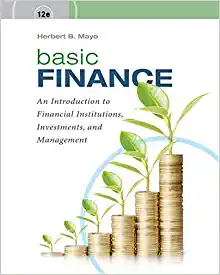Question
1. Which one form of business organization as the disadvantage of double taxable? a. Corporation b. Sole proprietor c. Partnership d. All of the above
1. Which one form of business organization as the disadvantage of double taxable?
a. Corporation
b. Sole proprietor
c. Partnership
d. All of the above
2. The appropriate managerial goal of a for-profit company is
a. Minimize profit of the company's
b. Maximize profit of the company's
c. Minimize the price of the company's stock
d. Maximize the price of the company's stock
3. The pretax earnings for Jack Taxpayer is $100,000. Jack is considering whether to incorporate as a corporation or remain as a sole proprietor. Jack has learned that corporate tax is 34% and personal tax is 30% at that level of earnings. Base on these information what form of business organization (corporate or proprietor) should Jack choose and how much net tax saving will Jack have between the two choices?
a. Corporate with tax saving of $23,800
b. Proprietor with tax saving of $23,800
c. Corporate with tax saving of $34,000
d. Proprietor with tax saving of $34,000
Chapter 2 - Financial Background
4. Earnings before interest and taxes (EBIT) is an important line on the income statement, because it shows the profitability of the firm's operations before considerations of how it is financed. In relationship to operating profit.
a. EBIT is the same as operating profit
b. EBIT is not the same as operating profit
c. It depends on what industry it is because certain industry does not have operating profit
d. Need additional information
5. "What is the difference" Company has revenue (amount received in cash) in last month of $4,000, unpaid cost incurred in last month of $2,500 and is subjected to 30% corporate income tax (assumed paid in cash). In determining its net income as prepared under Accounting method versus under Cash Flow method which format shows a higher figure (number) and what is the difference between the two?
a. Accounting method by $3,550
b. Cash Flow method by $3,550
c. Accounting method by $2,500
d. Cash Flow method by $2,500
6. The U.S. tax system favors debt financing of business over equity financing. The reasons is
a. Interest payments made to equity investors are tax deductible to the paying company
b. Interest payments made to equity investors are tax deductible to the receiving company
c. Interest payments made to debt investors are tax deductible to the paying company
d. Interest payments made to debt investors are tax deductible to the receiving company
7. Select the correct statement from the following:
a. Interest is payment/return paid to debt holders whereas dividend is to equity holders
b. Interest is payment/return paid to equity holders whereas dividend is to debt holders
c. None of the above is correct
d. All of the above are correct.
8. Given EBIT for General Corporation is $120 and the tax rate is at 30%. If interest payment is $20 and dividend payment is $20 under the appropriate capital financing of debt or equity.
What is the net retained earnings addition under debt and equity?
a. Debt is $70 and equity is $64
b. Debt is $64 and equity is $70
c. Debt is $50 and equity is $84
d. Debt is $84 and equity is $50
Chapter 3 - Cash Flows and Financial Analysis
9. Which one is not an activity in the statement of cash flows?
a. operating
b. investing
c. financing
d. borrowing
10. In a Balance Sheet one can find
a. assets equal to liabilities
b. assets equal to liabilities and stockholders' equity
c. assets must be larger than liabilities
d. assets must be larger than liabilities and stockholders' equity
Step by Step Solution
There are 3 Steps involved in it
Step: 1

Get Instant Access to Expert-Tailored Solutions
See step-by-step solutions with expert insights and AI powered tools for academic success
Step: 2

Step: 3

Ace Your Homework with AI
Get the answers you need in no time with our AI-driven, step-by-step assistance
Get Started


